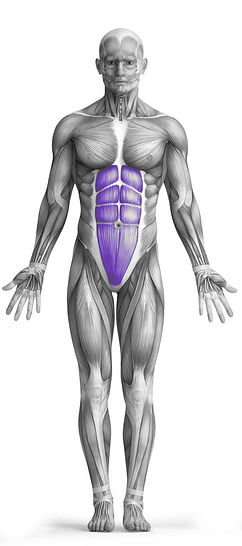Twisting Floor Crunch 101 Video Tutorial
0

Exercise Synopsis
Target Muscle Group
Abs
Secondary Targets
None
Execution
Isolation
Force Type
Pull
Required Equipment
Bodyweight
Fitness Level
Beginner
Variations
None
Alternatives
None
Timer
Hour
Minute
Second
Stopwatch
00:00:00:00
Overview
The Twisting Floor Crunch is an effective core exercise that targets the abdominal muscles, particularly the obliques. Performed on the floor using only bodyweight, it involves lying on your back with your knees bent and feet flat on the ground. As you crunch upwards, you twist your torso to one side, bringing your opposite elbow toward the knee, engaging the obliques and strengthening the entire abdominal region. This movement is repeated on both sides, helping to improve core strength, stability, and rotational flexibility without requiring any equipment.
How to Perform
Begin by laying flat on your back on a mat with your knees bent and feet placed flat on the ground.
Lift your left leg, ensuring your knee is bent at approximately a 90-degree angle.
Cross your right leg over the left, placing your right ankle on the left knee.
Position your hands lightly behind your head with your fingertips touching the sides of your head.
Engage your core and slightly raise your shoulder blades off the mat.
Twist your torso as you bring your left elbow toward your right knee, engaging the obliques as you crunch up.
Lower your torso back to the starting position slowly, making sure not to let your shoulder blades touch the floor between repetitions.
Repeat the movement for the opposite side, bringing your right elbow to your left knee.
★ Bonus: For exercises that involve external weights (such as dumbbells, barbells, or machines), the One Rep Max (1RM) calculator can help you estimate your maximum lifting capacity. Use it to track your strength progress and adjust your training for optimal results.
Tips
Keep your shoulder blades elevated off the floor at all times during the exercise.
Focus on bringing your elbow as high as you can by engaging your abdominal muscles, avoiding any swinging or jerking motion.
How Not to Perform
Avoid Using Momentum: Do not swing your torso or legs to complete the movement. Focus on controlled, deliberate actions to engage your abs rather than relying on momentum, which can reduce the effectiveness of the exercise and increase the risk of injury.
Don't Pull on Your Neck: Keep your hands lightly behind your head without tugging or pulling on your neck. This helps prevent strain on your neck muscles and ensures the focus remains on your core.
Avoid Lowering Your Shoulder Blades to the Floor: Never let your shoulder blades touch the mat between reps. This can reduce the activation of your abs and decrease the overall intensity of the exercise.
Don’t Arch Your Lower Back: Keep your lower back pressed gently against the floor to prevent strain. Arching your back can cause unnecessary pressure on the spine and lead to discomfort or injury.
Don't Rush Through the Movement: Perform each repetition slowly and with control. Quick, shallow movements can lead to inefficient use of energy and limit muscle activation.
Avoid Twisting Too Much: While it’s important to twist your torso to engage the obliques, avoid over-rotating. Twisting too far can cause strain on your lower back. Keep the movement within a controlled range.
Don’t Let Your Feet Lift Off the Floor: Ensure that your feet remain firmly on the mat during the exercise. Lifting your feet can cause instability and reduce the focus on your abdominal muscles.
Don’t Hold Your Breath: Remember to breathe throughout the exercise. Holding your breath can create unnecessary tension in your body and reduce the efficiency of your workout.
Avoid Using Your Arms to Assist: Keep your arms stationary behind your head. Using them to push or pull yourself up takes the focus away from your abs and can cause shoulder strain.
Variations
Variations of fitness exercises refer to different ways of performing a specific exercise or movement to target various muscle groups, intensities, or goals. These variations aim to challenge the body differently, prevent plateaus, and cater to individuals with varying fitness levels.
Alternatives
Alternative exercises in fitness refer to different movements or activities that target similar muscle groups or serve the same training purpose as the primary exercise. These alternative exercises can be used as substitutes when the original exercise is unavailable or challenging to perform due to various reasons such as equipment limitations, injuries, or personal preferences.








